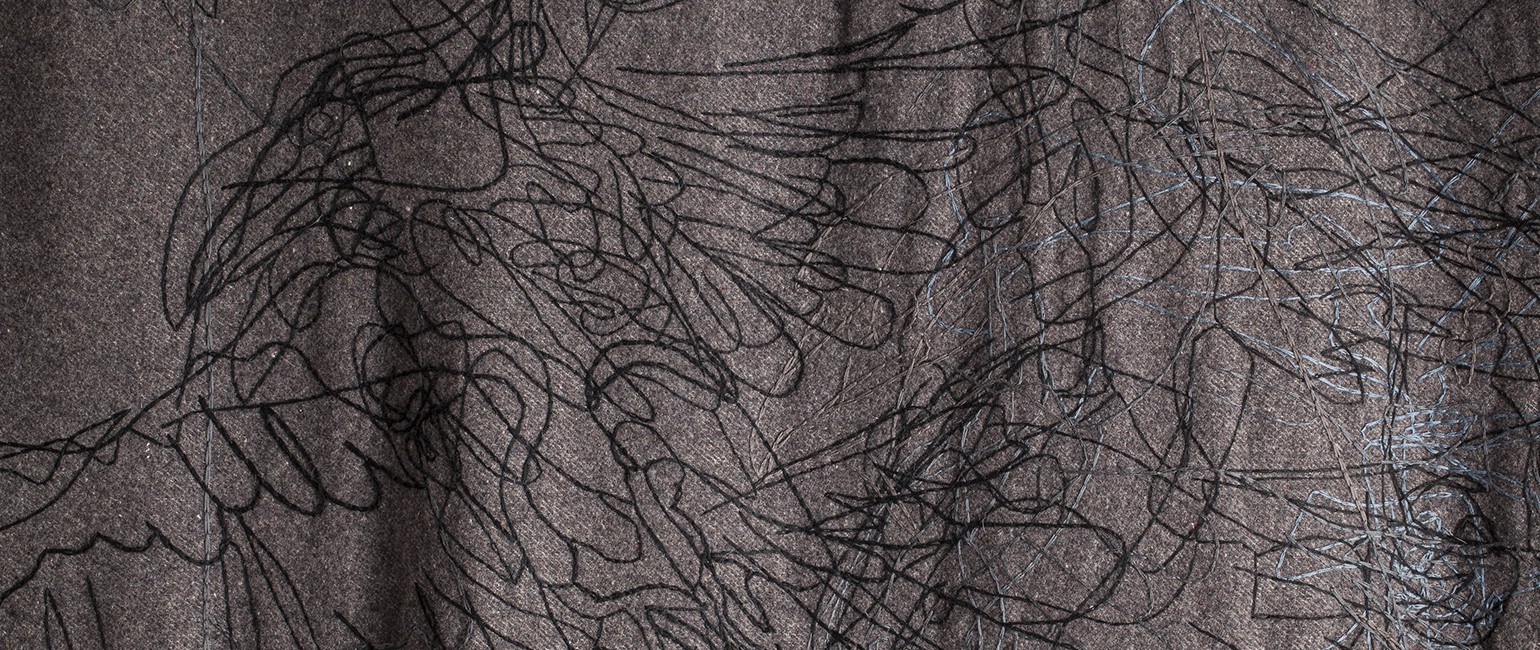Narrative Thread: Gina Adams and Marie Watt
An exhibition is a significant site to investigate broken promises and untold stories, to unravel dominant narratives and to focus on historical injustices repeated and repeating. Gina Adams and Marie Watt sew together broken promises. In large textiles with pale applied letters and small stitches that create constellations of communal hand motions, their work holds narrative power, internal sources of energy, potential for reanimation, history, and memory of action.
Narrative Thread: Gina Adams and Marie Watt tugs on the string of interrelated stories with gestures of art making that enfold memory and words that call knowledge forward to another generation. The stories, sounds, and silences integrated into each stitch of the fiber-works in the exhibition are connected to a specific material history that combines women’s work with distinct elements of political resistance. These stitches are dangerous; they use their needles to pin stories of injustice, universal time, and myth making to the wall.
SELECTED WORKS
Image Carousel with 10 slides
A carousel is a rotating set of images. Use the previous and next buttons to change the displayed slide
-
Slide 1: Gina Adams, Louisiana Purchase, 2019. Courtesy of the artist and Accola Griefen Fine Art; photo: Aaron Paden
-
Slide 2: Gina Adams, Louisiana Purchase (reverse), 2019. Courtesy of the artist and Accola Griefen Fine Art; photo: Aaron Paden
-
Slide 3: Gina Adams, Treaty at Fort Laramie, 1851 (front), 2017. Courtesy of the artist and Accola Griefen Fine Art; photo: Aaron Paden
-
Slide 4: Gina Adams, Treaty at Fort Laramie 1851 (reverse), 2017. Courtesy of the artist and Accola Griefen Fine Art; photo: Aaron Paden
-
Slide 5: Gina Adams, New York Indians to the King and Beaver Hunting Ground 1701 (front), 2016. Courtesy of the artist and Accola Griefen Fine Art; photos: Aaron Paden
-
Slide 6: Gina Adams, New York Indians to the King and Beaver Hunting Ground 1701 (reverse), 2016. Courtesy of the artist and Accola Griefen Fine Art; photos: Aaron Paden
-
Slide 7: Marie Watt, A Cautionary Tale on Darkness (Raven threatens to take back the light), 2015, detail. Courtesy the artist and Marc Straus Gallery, New York
-
Slide 8: Marie Watt, Antipodes Study in Black, 2020. Courtesy the artist and Marc Straus Gallery, New York
-
Slide 9: Marie Watt, Antipodes Study in Dusty Rose, 2020. Courtesy the artist and Marc Straus Gallery, New York
-
Slide 10: Marie Watt, Companion Species at What Cost, 2020. Courtesy the artist and Marc Straus Gallery, New York
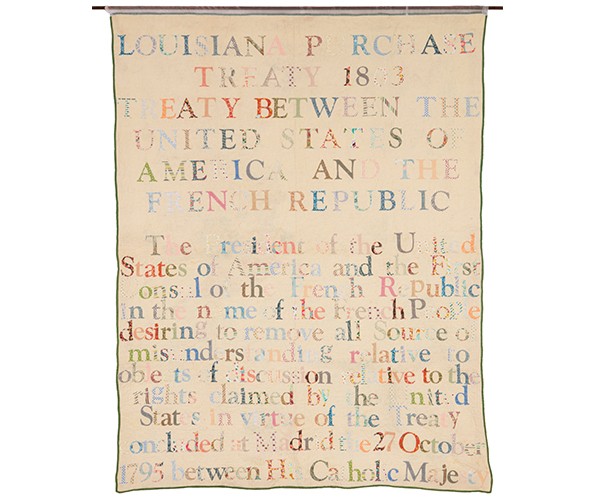
Gina Adams, Louisiana Purchase, 2019. Courtesy of the artist and Accola Griefen Fine Art; photo: Aaron Paden
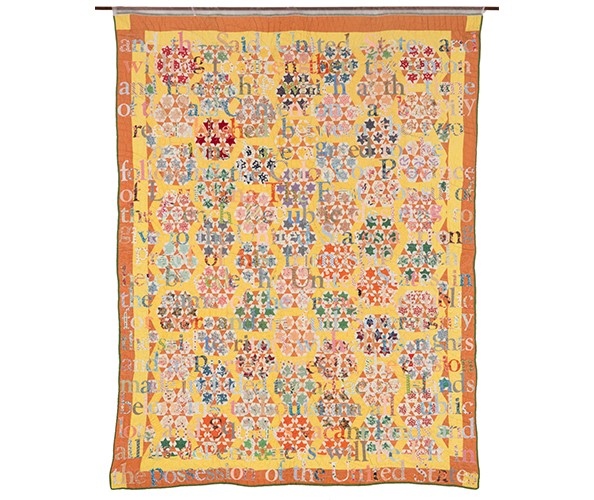
Gina Adams, Louisiana Purchase (reverse), 2019. Courtesy of the artist and Accola Griefen Fine Art; photo: Aaron Paden
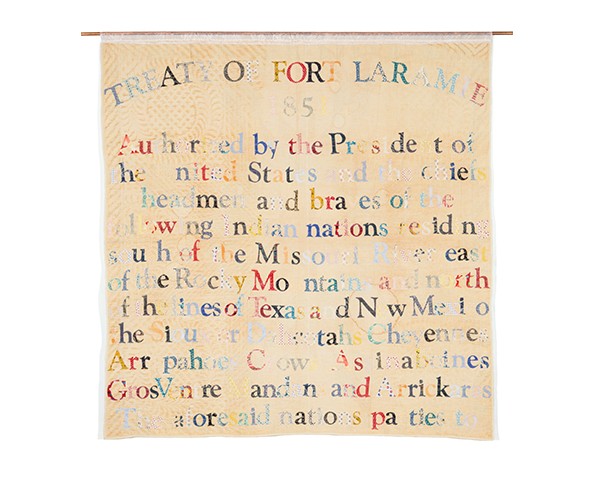
Gina Adams, Treaty at Fort Laramie, 1851 (front), 2017. Courtesy of the artist and Accola Griefen Fine Art; photo: Aaron Paden
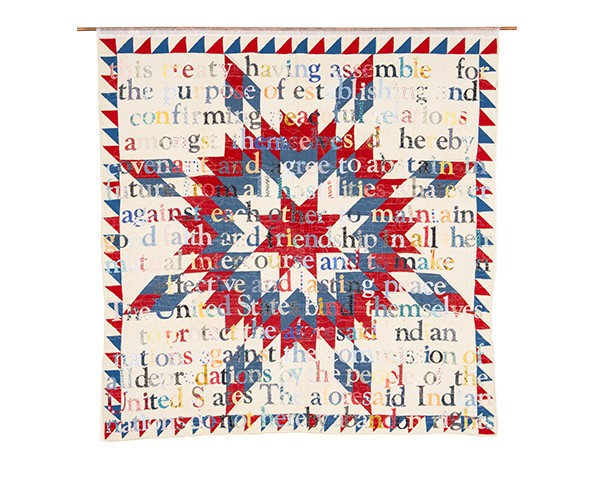
Gina Adams, Treaty at Fort Laramie 1851 (reverse), 2017. Courtesy of the artist and Accola Griefen Fine Art; photo: Aaron Paden
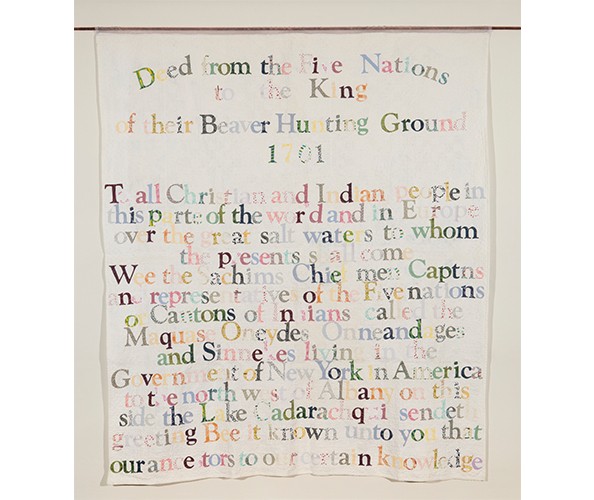
Gina Adams, New York Indians to the King and Beaver Hunting Ground 1701 (front), 2016. Courtesy of the artist and Accola Griefen Fine Art; photos: Aaron Paden
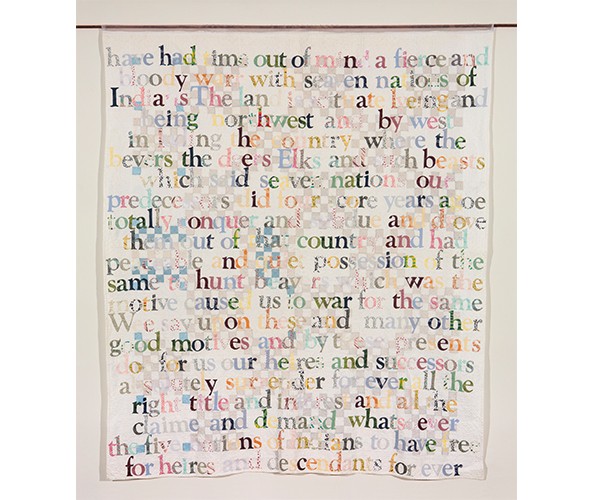
Gina Adams, New York Indians to the King and Beaver Hunting Ground 1701 (reverse), 2016. Courtesy of the artist and Accola Griefen Fine Art; photos: Aaron Paden
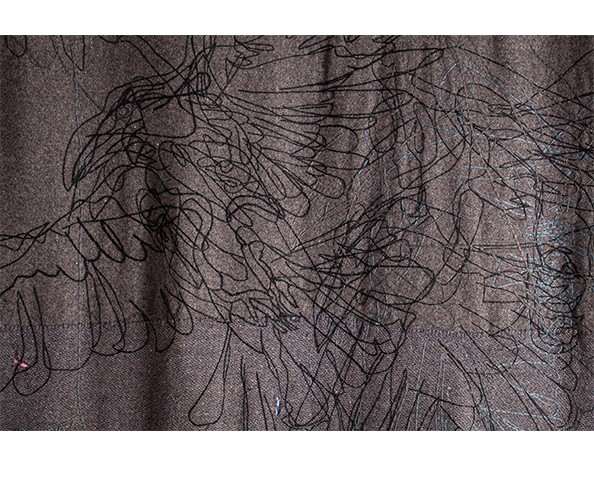
Marie Watt, A Cautionary Tale on Darkness (Raven threatens to take back the light), 2015, detail. Courtesy the artist and Marc Straus Gallery, New York
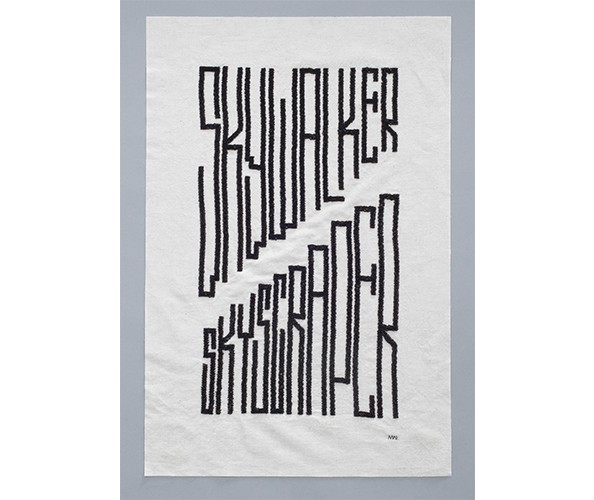
Marie Watt, Antipodes Study in Black, 2020. Courtesy the artist and Marc Straus Gallery, New York
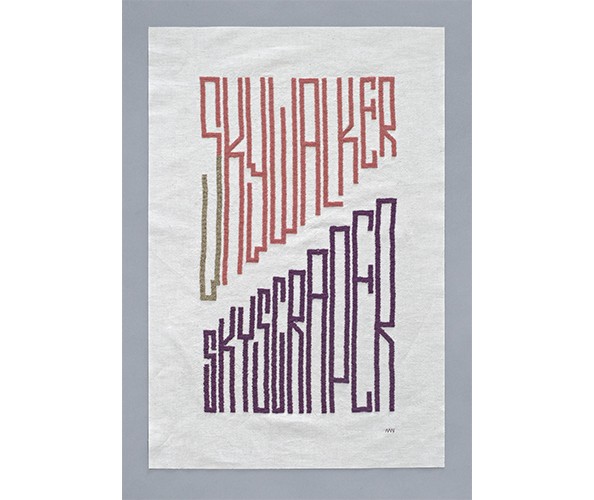
Marie Watt, Antipodes Study in Dusty Rose, 2020. Courtesy the artist and Marc Straus Gallery, New York
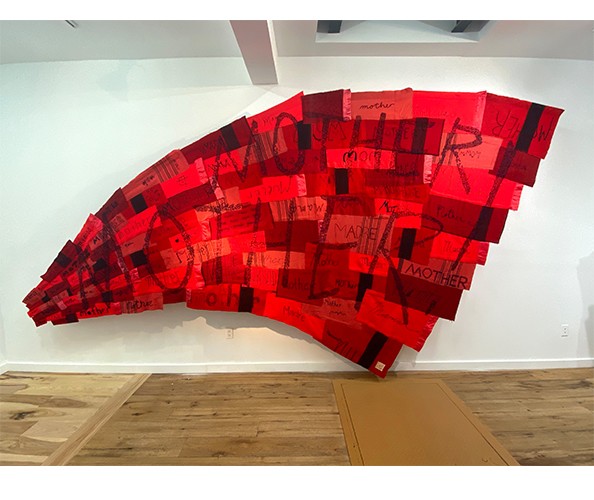
Marie Watt, Companion Species at What Cost, 2020. Courtesy the artist and Marc Straus Gallery, New York
Narrative Thread illuminates the centrality of fiber to contemporary artistic practice while uncovering the social dynamics—including the roles of race and gender— that determine how such art has historically been defined and valued. As feminist artists, Adams and Watt are specifically interested in fiber for its explicit connection to craft and women’s work. They use it in ways to make visible, not only power relations facilitated by the hierarchy of the art/craft divide, but also to examine craft as cultural heritage, tradition, and memory. Their work offers consideration of the way asymmetrical power relations govern the production, reception, and circulation in the art world of craft-based practice. Looking at a continental history of Indigenous women’s textile production across a history of colonial conflict that includes women’s collective art-making and the connection between women’s material practices and storytelling, Adams and Watt reflect on their own roles as keepers of cultural knowledge and their use of communal women's textile work as a means of healing colonial trauma.

